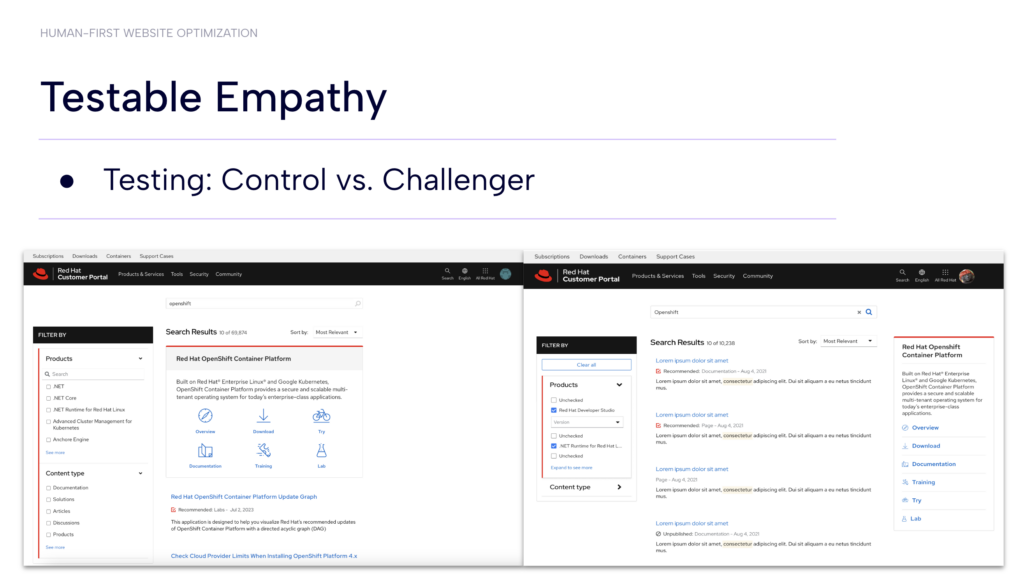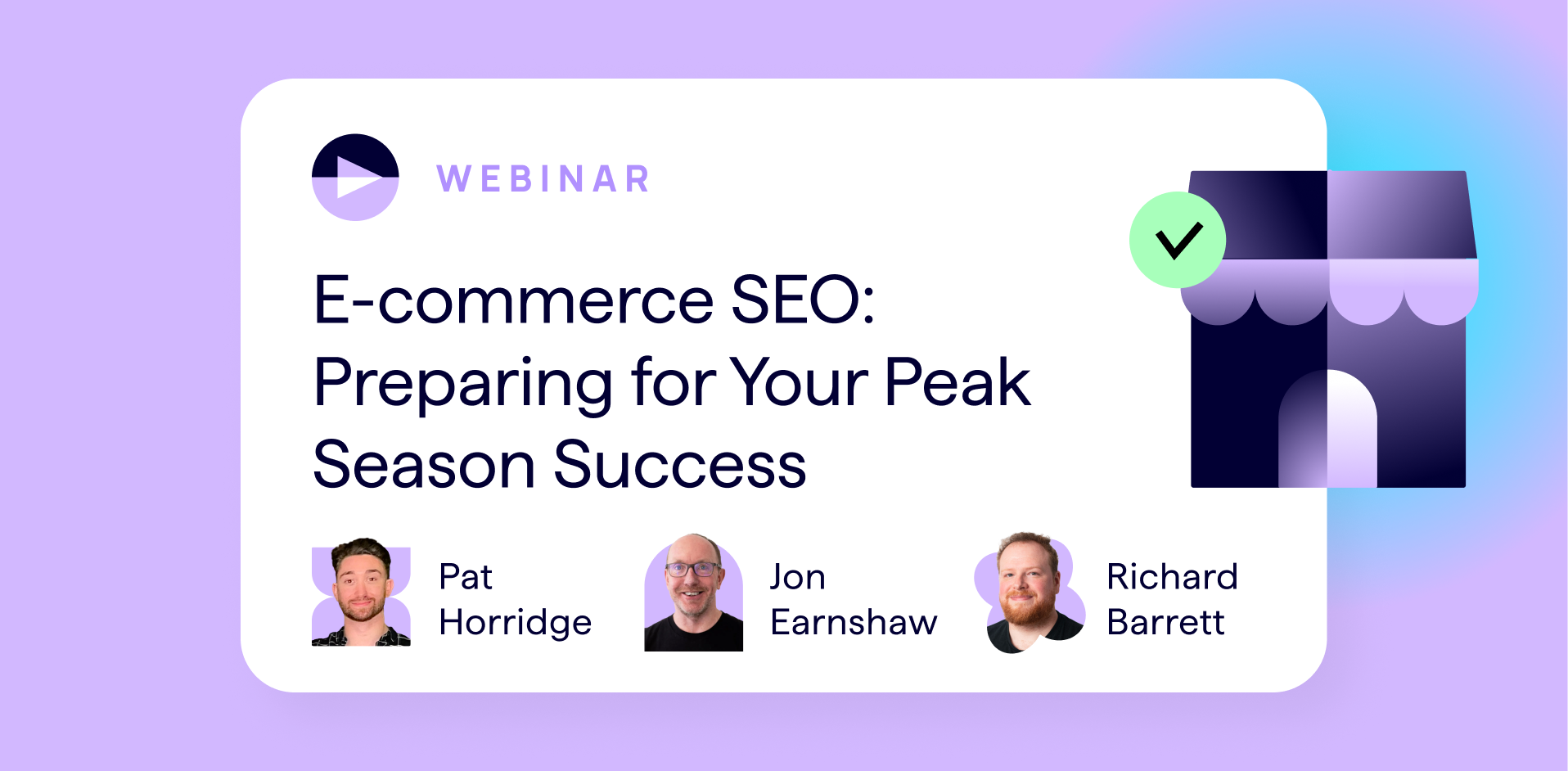In 2024, it can often feel like algorithms and machines govern our world. (And for SEO and web professionals tracking Google updates day in and day out, this can feel even more pronounced!)
But algorithms are built to cater to (and manipulate) human behavior—losing sight of the human user at the other end of the algorithmic results can cause digital efforts to falter.
Explore how Red Hat has found success with a human-first approach to website optimization — and learn how to implement similar frameworks for long-term performance results — in this on-demand Lumar webinar.
In this session, JP Sherman (Principal Product Manager, Search & Findability at Red Hat) and Lumar host Joshua Eden cover topics including:
- What is meant by human-first website optimization
- How a human-first approach ties into SEO, information architecture, UX/UI, accessibility, findability, conversions, and more.
- Reducing your users’ mental effort
- Organizational adoption of human-first web optimization principles
“I’ve been working with the Red Hat team on the SEO side and the accessibility side for the last year and a half, and I am particularly impressed and inspired by Red Hat’s commitment to taking this human-first approach to website optimization.”
— Joshua Eden, Senior Customer Success Manager, Lumar
“Today is the first in what will be a two-part series where we’ve invited two key leaders at Red Hat — J.P. being one of them — to share what this approach means and what it actually looks like at Red Hat, its importance, and how it aligns with and helps drive the business’s goals.” Eden explains.
Watch the full webinar session above or read on for our top takeaways.
Defining human-first website optimization
Human-first website optimization prioritizes human psychology and behavior when making choices to improve a website or online search experience.
“The entire thesis of how I approach search is that search is a human behavior first,” says Sherman.
“Before there was technology [like Google], humans searched. There is a long tradition of humans looking for things before we have machines helping them look for things. So I try to take this as my base thesis for understanding search and search behavior.”
“I want to understand the psychology and behavior of humans as they interact with algorithms of search in a sales or marketing context,” he says.
When approaching website optimization, Sherman examines:
- Intent and desire
- Search patterns
- Information scent trails
- Acceptance and rejection criteria
- Trained and untrained experiences
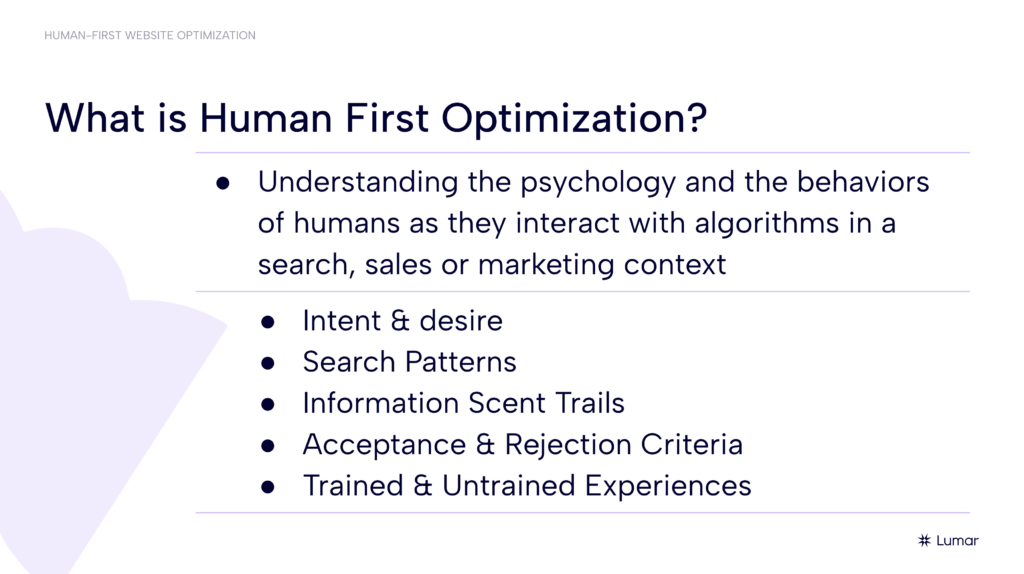
Website findability: things finding things
Sherman suggests website optimizers look not just at user behavior but also findability, which is a separate but related concept to search engine ranking.
“I want to pull the camera back and look at [not just ranking better in search], but how do people search, why do people search, and how can we assist people looking for that information — and what benefit it can have to the business,” he explains.
According to Sherman, findability is a process where tactics and disciplines combine to allow the user to accurately and reliably find what they’re looking for — quickly. When assessing your website’s findability, you should take into account:
- Testable empathy
- User research
- SEO
- Information architecture
- UI/UX
- Website accessibility
Identifying the core desires of your audience
Sherman analyzes the actions users take on the Red Hat website to identify his audience’s core desires.
“From a Red Hat perspective: We are a software company. We are an open-source software company. So when we look at what people actually do, in this case, on our customer portal or a support section — they deploy, they install, they migrate, they develop, and they administer [the software],” he explains.
“I like to look at action verbs. What do people need to do? How do they interact with my website? And then I have very specific definitions of these action verbs.”
He gives examples of action verbs for his company’s website in the chart below.
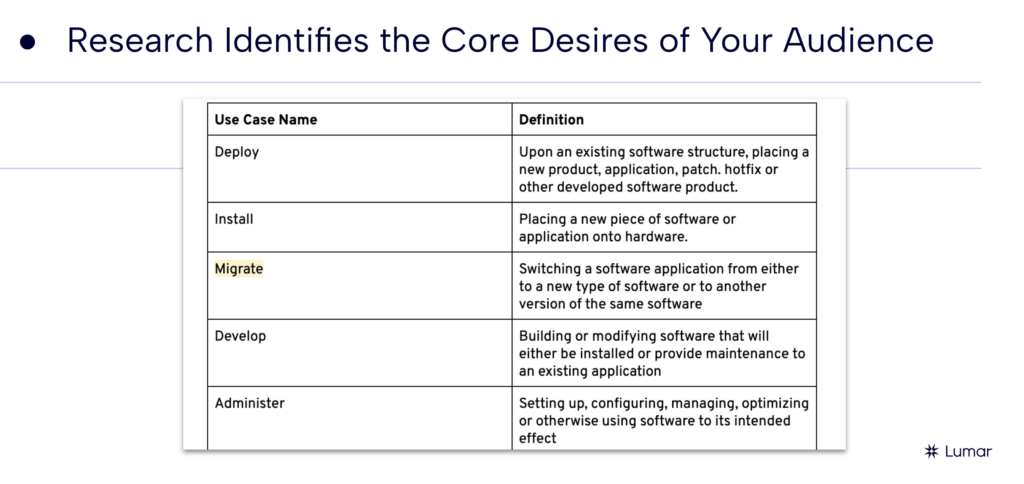
Sherman then uses this ‘action verb’ research to build out website content that aligns with his users’ identified needs and desires. Aligning website content to ‘core desire’ action verbs can help you optimize your site in several ways:
- Assists search engines in understanding a particular query.
- Assists website managers in building out the site’s information architecture to organize the content.
Identifying gaps in topic distribution and misalignment with user desires on your website
Sherman points to Lumar as a good tool for understanding how topical distribution currently works on your website — and for quickly identifying potential gaps or room for improvement on pages across your core topic areas.
As an example, he looks at how content aligned to the ‘security’ topic on the Red Hat website is structured:
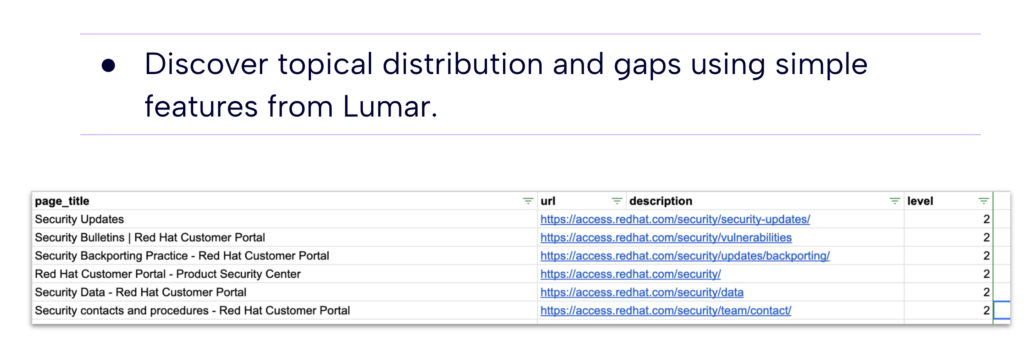
When it comes to the security topic on the Red Hat site, Sherman asks: “What are my level 2s?”
On one page here, he notes a mismatch between the page title “Security Bulletins” and its URL, which cites “vulnerabilities.”
“If people are looking for vulnerabilities, how do they search for it?” He asks. “Is this the best way to present that information? Are there other security-related things they are looking for that should be part of level 2 architecture on this site?”
Testable empathy
Sherman also speaks to what he calls testable empathy.
Sherman explains that testable empathy basically boils down to creating a hypothesis—“I think people will like X, based on my research and experience with our customers”—and being able to test that hypothesis on your site.
For example, one of Red Hat’s issues was properly understanding what users wanted from the site if they arrived via a high-volume branded and/or top-level search query.
“We didn’t know if people were looking for downloads, or security, or vulnerabilities, or troubleshooting,” Sherman says.
One solution was to include a “1 Box.” This box collects all the major aspects of the product so users can easily find what they are looking for.
They tested this out within the on-site search results, and it worked to an extent. But Sherman realized that when people come to the search experience, any search experience, they want to see more conventional search results. Not something like the “1 Box” taking up all the real estate.
“We wanted this 1 Box to be more of a billboard,” Sherman says. “We want it to be something that is assistive.”
After testing – and coming to the problem from a level of empathy and understanding – the result was an intuitive, leaner search results page that was more useful to the user. And it resulted in more clicks within the on-site results.
Reducing mental work for your users
Sherman believes that humans prefer to spend less energy on tasks if they can.
“I don’t want to say people are lazy,” he admits. “But I think there’s a level of unconscious optimization in the things that we do.”
Sherman points out that in biology, nature generally evolves to get the most reward from doing the least amount of work. The same applies to websites.
We, as website designers/SEOs, need to do the work that people don’t want to do.
“People generally don’t care where they get the information from,” Sherman adds. “They just want to get the information.”
He also points to peoples’ general preference for roads over trails. I.e., the shortest, quickest route is often what people prefer. This can apply to:
- Site navigation
- Keywords
- UI/UX
- Site speed
We need to ask: What are the ‘roads’ available that web users are already used to? After all, there’s always going to be a faster option – your competitor’s website.
Humans want roads over trails, but Sherman reminds us that the same can be said for search engines, too.
He notes that humans want to find what they’re looking for, with the trade-off being accuracy and time. Looking through 10 blue links used to be the time cost for accuracy. But the advent of Google’s AI-generated search results has reduced the time cost at the expense of accuracy.
In our human-first optimized website, the experience should balance both quick roads and accurate results.
Adopting a human-first optimization approach within your organization
In summary, Sherman offers some key points to remember when adding a human-first approach to website optimization within our own teams.
You need to understand and communicate the short- and long-term goals. In the short term, human-first optimization reduces friction and increases online conversions. It boosts ranking signals by optimizing the search experience.
The long-term benefits can be seen in the depth and breadth of topical signals that a human-first optimized site provides over time.
Sherman also reminds us that by optimizing for humans over algorithms, our sites are better prepared to weather Google’s frequent core updates.
Crucially, though, whether a search is happening on Google, your own website, or in the physical space, humans want today what they have wanted for thousands of years:
They want the quickest route to the correct (most accurate) destination.
It’s important to remember that as we assist users through their omnichannel journeys, we understand and empathize with them to help them get where they need to go.
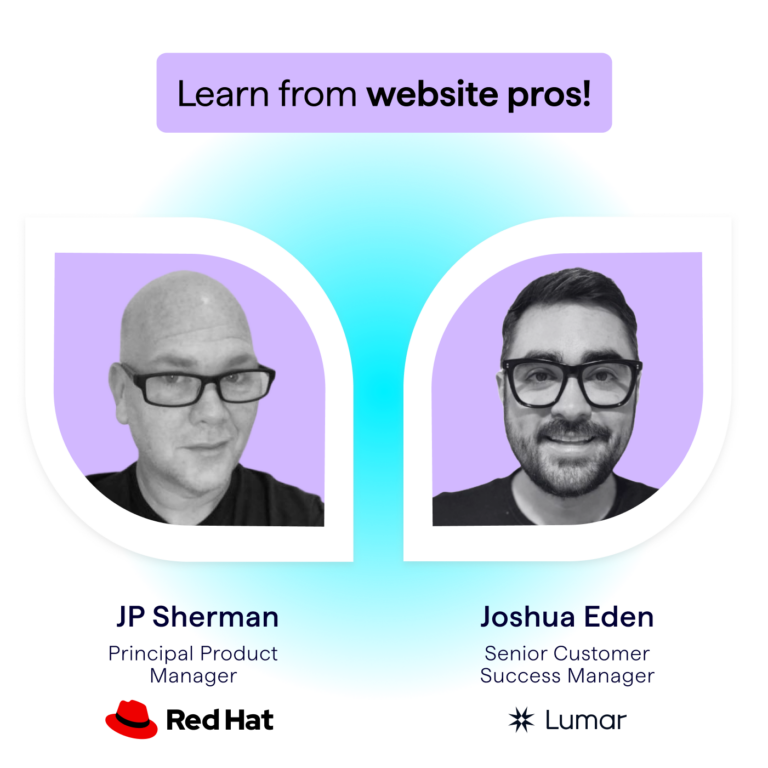
Meet the Webinar Speakers
- Speaker — JP Sherman, Principal Product Manager, Search & Findability @ Red Hat
- Host — Joshua Eden, Senior Customer Success Manager @ Lumar
Don’t miss the next Lumar webinar!
Sign up for our newsletter below to get alerted about upcoming webinars, or give us a follow on LinkedIn or Twitter/X to stay up-to-date with all the latest news in website optimization.
Want even more on-demand SEO webinars? Explore the full library of Lumar SEO webinar content.

